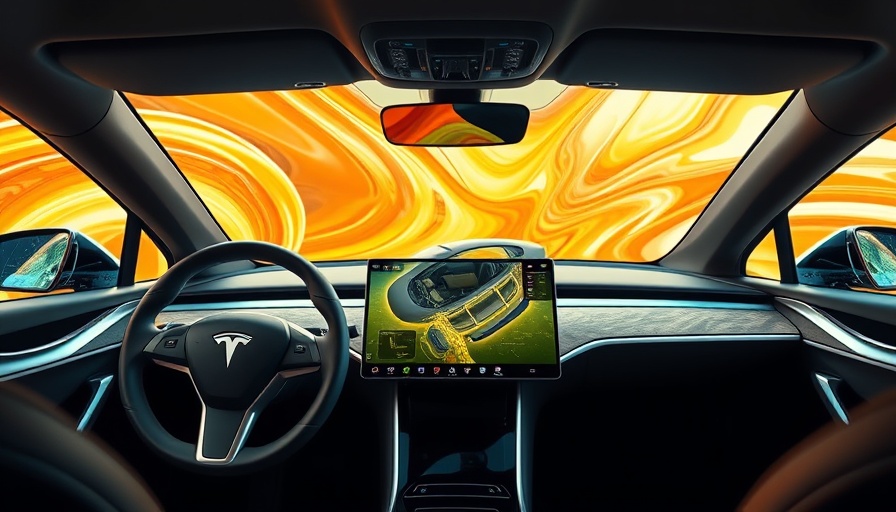
Is Tesla's Robotaxi Launch a Sign of Overpromising?
Tesla is on the verge of unveiling its highly anticipated robotaxi service this weekend in Austin, Texas. However, the enthusiasm surrounding this launch is tempered by an eyebrow-raising truth: a human "safety monitor" will occupy the front passenger seat of every robotaxi. This starkly contrasts with Elon Musk's original assertions that passengers would enjoy rides without human oversight, implicating the company's readiness for this revolutionary step into autonomous transport.
What Changed? The Evolution of Self-Driving Ambitions
Historically, Musk envisioned a future where one million robotaxis would hit the roads by now, converting personal vehicles into autonomous cabs through a simple software update. This ambitious goal has faced numerous hurdles, including multiple accidents linked to its misleadingly named "Full Self-Driving" capabilities. As it stands, Tesla's readiness for a driverless future appears compromised, forcing the company to implement human oversight in its nascent robotaxi venture.
Rethinking Expectations: What Small Business Owners Should Know
As small business owners eye the potential of the robotaxi service, understanding the operational implications is essential. The presence of a safety monitor might signal delays in fully autonomous transport, which could influence both logistics and operational costs for companies considering Tesla's robots. Owners need to weigh not only the cost-effectiveness of such technologies but also the reliability and associated risks that come with them.
The Rise of Human Supervision in Autonomous Vehicles
This recent announcement poses questions about the state of today's autonomous vehicle technologies. Historically, Waymo—the leader in the robotaxi space—also tested rides with human supervisors on board. However, the main difference lies in the expectations set forth by Tesla. While Waymo gradually established trust in its capabilities, Tesla's lofty promises might lead to public disillusionment.
Comparative Insights from Other Leading Companies
In the world of automated transport, other players such as Uber and Waymo have similarly struggled with technical limitations. Despite their advanced technologies, the complexities surrounding safety, regulation, and public perception remain hurdles. For small business owners dependent on reliable transportation, these developments can redefine operational strategies and partnerships with tech firms.
The Future That Lies Ahead
With Tesla's robotaxi launch looming, industry experts predict varying timelines for true autonomy in public transport. As human oversight becomes a fixture for initial deployments, small businesses should prepare for a gradual adaptation to these technologies. Wait-and-see could be the most prudent strategy before investing heavily into transportation slated for a transformation.
Risk Factors That Small Business Owners Must Consider
Every new innovation invites its share of risks, especially when it involves safety and consumer trust. Small businesses need to remain vigilant as they adapt to emerging technologies. Legal liabilities from accidents involving autonomous vehicles can wreak havoc, prompting owners to rethink insurance and operational risk management strategies. Adapting to technologies such as Tesla's robotaxi will require thorough preparation.
Conclusion: The Path Forward
Tesla's admission regarding the necessity of human safety monitors in the robotaxis exemplifies the balancing act between ambition and operational reality. For small business owners contemplating the integration of autonomous transport into their logistics systems, understanding these nuances is crucial. Stay informed about developments in the industry, and evaluate your approaches to transportation, technology adoption, and risk management as the future rolls into your operations.
 Add Row
Add Row  Add
Add 




Write A Comment